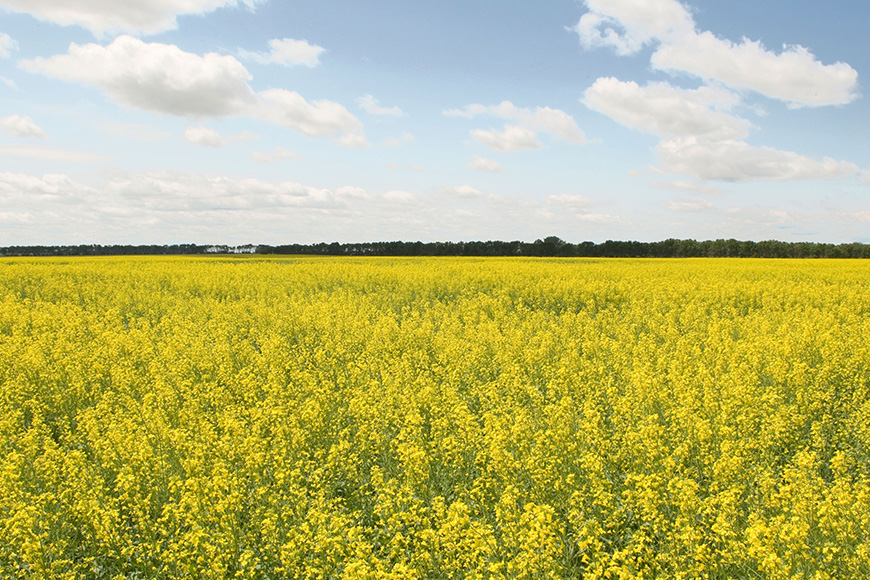Use Variable-Rate Practices to Optimize Input Efficiency

Time is money. And in today’s ag economy, you can’t afford to waste either one.
Variable-rate planting and applications can help you allocate your in-field investments more precisely and place seed and other inputs where they will perform optimally. Here are some tips to create effective variable-rate prescriptions for the upcoming season.
1. Consult your trusted advisor.
There’s a lot that goes into generating a good variable-rate prescription, so contact your agronomist now for help. Tell him or her about your goals, your opportunities and what you’re doing now. Your agronomist will then use this information to develop the nuts and bolts of your prescriptions, saving you time.
2. Place seed properly.
A professionally prepared field prescription will help you plant the right seed in the right place at the right rate. Essentially, the prescription is a map your planter monitor reads that lets it know which zones of your fields will get what rates of seed.
Using the R7® Tool by WinField United, your agronomist can create zones for different areas, with each aspect of your field comprising a “layer” of the prescription map. Those layers can include variables such as soil type, historical yield data and prior fertility rates. Collectively, these factors will let you know what plant populations to use in different areas to achieve the greatest potential outcome.
3. Determine nutrient needs.
Soil sampling is a good start for any fertility program, and using historical yield data, in-season imagery or other available satellite imagery helps increase the accuracy of variable-rate prescriptions. Work with your trusted advisor to determine optimal soil test timing for this spring. Test results will identify available nutrients in the soil, allowing you to address nutrient deficiencies and improve the nutritional profile of your fields.
4. Apply nutrients as needed.
Proper nutrient management can help you budget in-field resources better, thus optimizing your return on investment potential. For example, you may have one area that requires more lime than another does. It doesn’t make sense to put the same rate of lime on both places. You can also use variable-rate prescriptions to allocate other inputs, such as fungicides.
Making your inputs count
No two fields are equal. The goal of any variable-rate prescription is to improve ROI potential by prioritizing input allocations. Talk with your agronomist today about how you can partner to create the prescriptions that work best with your field variability and your budget, and help you reach your yield and ROI goals.
Editor’s Note: This article was originally published in March 2018 and was updated in January 2019.
Variable-rate planting and applications can help you allocate your in-field investments more precisely and place seed and other inputs where they will perform optimally. Here are some tips to create effective variable-rate prescriptions for the upcoming season.
1. Consult your trusted advisor.
There’s a lot that goes into generating a good variable-rate prescription, so contact your agronomist now for help. Tell him or her about your goals, your opportunities and what you’re doing now. Your agronomist will then use this information to develop the nuts and bolts of your prescriptions, saving you time.
2. Place seed properly.
A professionally prepared field prescription will help you plant the right seed in the right place at the right rate. Essentially, the prescription is a map your planter monitor reads that lets it know which zones of your fields will get what rates of seed.
Using the R7® Tool by WinField United, your agronomist can create zones for different areas, with each aspect of your field comprising a “layer” of the prescription map. Those layers can include variables such as soil type, historical yield data and prior fertility rates. Collectively, these factors will let you know what plant populations to use in different areas to achieve the greatest potential outcome.
3. Determine nutrient needs.
Soil sampling is a good start for any fertility program, and using historical yield data, in-season imagery or other available satellite imagery helps increase the accuracy of variable-rate prescriptions. Work with your trusted advisor to determine optimal soil test timing for this spring. Test results will identify available nutrients in the soil, allowing you to address nutrient deficiencies and improve the nutritional profile of your fields.
4. Apply nutrients as needed.
Proper nutrient management can help you budget in-field resources better, thus optimizing your return on investment potential. For example, you may have one area that requires more lime than another does. It doesn’t make sense to put the same rate of lime on both places. You can also use variable-rate prescriptions to allocate other inputs, such as fungicides.
Making your inputs count
No two fields are equal. The goal of any variable-rate prescription is to improve ROI potential by prioritizing input allocations. Talk with your agronomist today about how you can partner to create the prescriptions that work best with your field variability and your budget, and help you reach your yield and ROI goals.
Editor’s Note: This article was originally published in March 2018 and was updated in January 2019.





